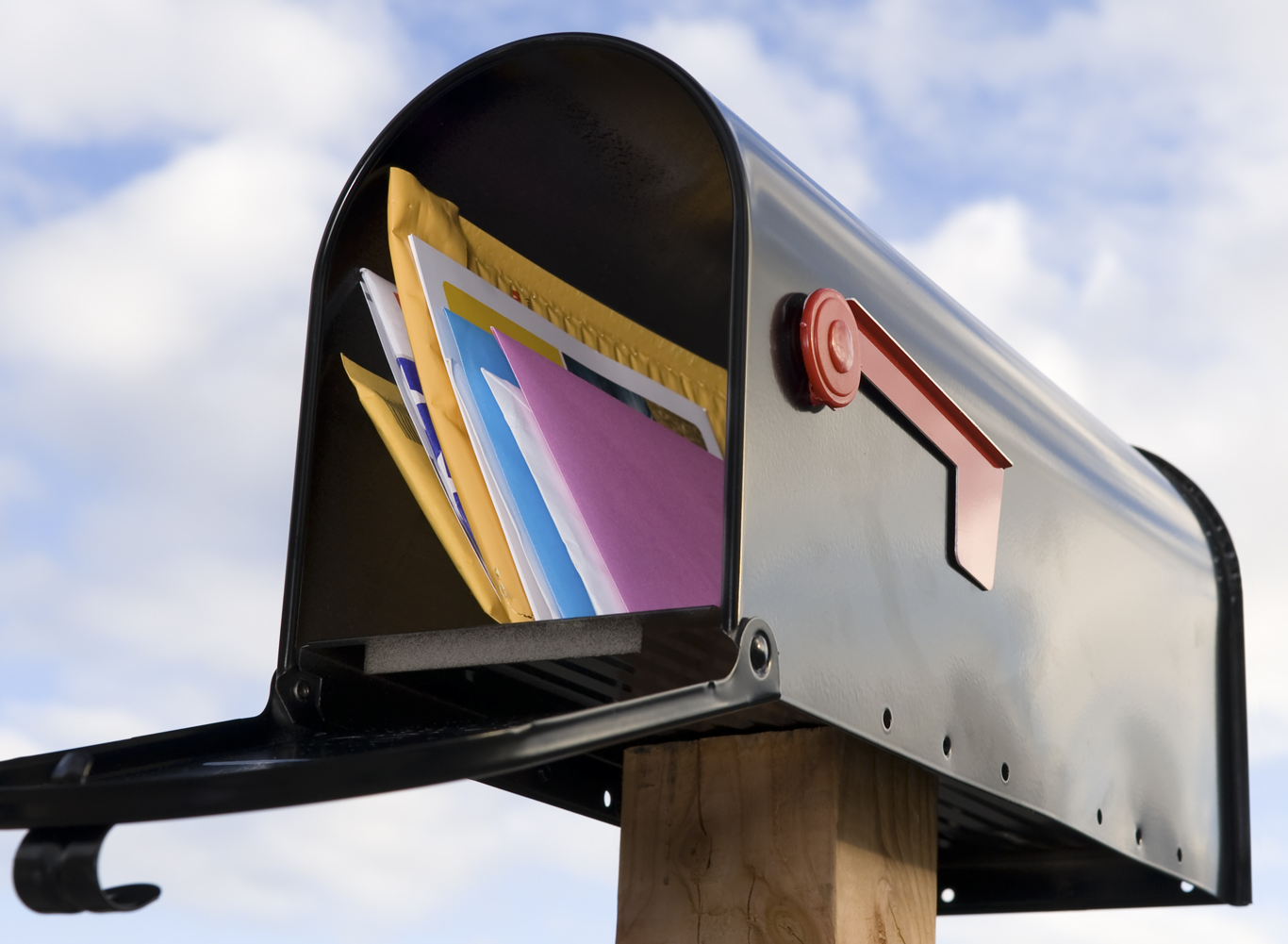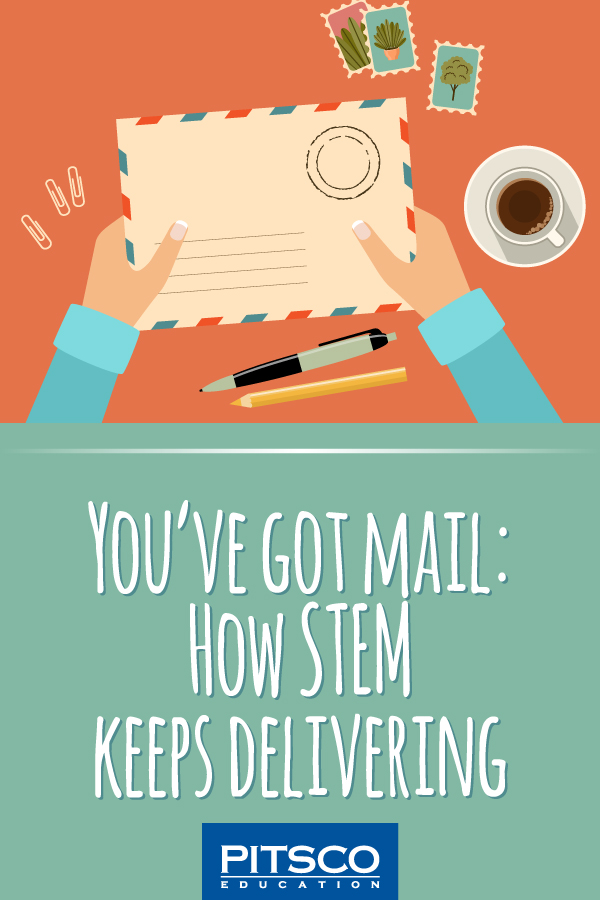Getting mail never gets old (well, unless it’s junk mail, but that’s an entirely different topic . . .). Receiving a card or a package from someone you love or a shop you like generally makes a person happy. And we have United States Postal Service (USPS) postal workers to thank for bringing that happiness to the box.

Though we’re nearing the end of July, we couldn’t resist celebrating this anniversary. July 1 is a big day of firsts in the history of the postal service, including its official creation to the establishment we now know. “On July 1, 1971, the Post Office Department was transformed into the United States Postal Service when it became an independent establishment of the executive branch of the US government” (USPS).
July 1 is also when stamps were first used and, according to the National Day Calendar, it’s also National Postal Worker Day. Per NationalDay.com, this day of recognition was established in 1997 as a way to appreciate the diligence of postal workers. “Across the United States, postal workers walk an average of 4 to 8 miles carrying a full load of letters and packages, delivering them promptly to each of our doorsteps. Approximately 490,000 postal workers across the United States head out each day to our residences and businesses.”
USPS History and Fast Facts
How Stuff Works has an in-depth overview of the postal service, and the USPS site has some incredible historical information and specific stories.
Here’s a condensed version of decades of organizational history:
- 1600s and 1700s
- During colonial times, prior to organization, mail was more informal and often delivered by people you knew, neighbors, or private messengers.
- In 1639, the first official post office was established in Richard Fairbanks’ tavern in Boston by the General Court of Massachusetts.
- In 1683, William Penn established the official post office in Pennsylvania, but there was growing need for centralization.
- In 1775, Benjamin Franklin was appointed postmaster general by the Continental Congress, and the roots of our modern system were established. Franklin had previously served as a local postmaster general in Philadelphia.
- 1800s
- The expansion of our country had people moving farther and farther west, which meant communications needed to go west too. Routes and weather played a critical role in delivery (or lack thereof). This meant innovation was needed.
- At this time, prior to Pony Express, mail could take about 25 days to reach its intended recipient (if you were lucky)! In the days of priority shipping (and Amazon Prime), that seems almost unimaginable.
- Several contracted services were created such as Butterfield Overland Mail Company and the Pony Express. The Pony Express service proved that using the Central Route, a delivery route that traversed the country, was possible. And by doing so, they could deliver mail in just 10 days!
Pony Express riders would “cover the 1,966 miles (3,164 kilometers) from St. Joseph, Missouri, to Sacramento, California — through Kansas, Nebraska, Colorado, Wyoming, Utah, Nevada and California. They crossed the Missouri River by ferry. At any given time, two riders were traveling on the route, one in each direction. They changed horses every 10-15 miles at one of the almost 200 stations located every 5-20 miles along the route. The riders went 75 to 100 miles before stopping and handing off the mail to the next rider. They averaged 10 miles per hour and completed the route in only 10 days, proving that the Central Route was faster” (HowStuffWorks).
-
- In 1861, the transcontinental telegraph was completed. This impacted the mail service because messages would now take minutes not days.
- 1900s
- In 1918, airmail service began.
- In 1963, zip codes were created!
- In 1971, the United States Postal Service, as it is now known, is established.
- “In 1900, 7 billion pieces of mail were delivered; by 1960, the agency was moving 63 billion letters and parcels” (Theweek.com).
Also, throughout mail service history, mail has been moved by foot, horse, rail, steamboat, car, motorcycle, air, and even pneumatic tubes and missiles! As technology and society advanced, so did the mail’s transportation methods!

- Present day – Did you know? Per the Innovation in the Mail page on the USPS website, there are many systems at work in processing and providing the mail:
-
- “The Delivery Barcode Sorter reads the barcode on letters and sorts them at 36,000 pieces per hour.”
- “The new Enhanced Package Processing System in Portland, OR, sorts packages at 25,000 pieces per hour.”
- “The Automated Delivery Unit Sorter sorts packages and bundles of mail at a rate of 4,000 pieces per hour with a sort accuracy of 99.95 percent.”
- “The Robotic Containerization System sorts trays and automatically loads rolling containers or pallets.”
- “The Automated Flat Sorting Machine sorts flat mail at 17,000 pieces per hour.”
- “The Automated Package Processing System sorts packages and bundles of mail at 9,500 pieces per hour.”
- “The High Throughput Parcel Sorter sorts packages and bundles at 15,000 pieces per hour.”
- “The Automated Parcel and Bundle Sorter sorts packages and bundles of mail at 6,000 pieces per hour.”
- “Tray sorting machines sort more than 18 million trays per day through conveyor systems.”
STEM Makes the Letters Go ’Round
To quote The Atlantic, “The Postal Service is a giant delivery machine. It bridges the physical and digital using any combination of humans and robots that works.” Together with people, science, tech, engineering, and math, the mail makes its way to you.
- It’s all in the numbers with zip codes! Since 1963, mail has been guided to its destination by this sequence of digits. In addition to the traditional five numbers, there’s a four-digit extension for even more preciseness. Wondering what those numbers represent?
Per HowStuffWorks:
-
- “The first digit represents the state. Numbers increase as you move west. Several states share each digit — 2, for example, represents the District of Columbia, Maryland, North Carolina, South Carolina, Virginia and West Virginia.
- The second and third digits represent regions within the state — the first three digits create the Sectional Center Facility (SCF) code. SCFs are the regional headquarters for mail sorting and distribution.
- The fourth and fifth digits represent more specific areas, like post offices and postal delivery zones within a city or town.
- ZIP + 4 has four extra digits that identify a specific segment of the five-digit delivery area — like a city block, office building or individual high-volume mail receiver.”
It’s clear when it comes to mail every digit counts!

- Machines and automation – In the stats already mentioned, you’ll see many instances of machines, robotics, and automation. In 1966, there was critical incident that led to the implementation of automation. In the post-war time, mail was at an all-time high and the post offices were being strained and didn’t have funding to purchase machines to keep going. After a burst of holiday mail, the largest post office in the country in Chicago stopped delivering mail for three weeks. After this, funding for post offices improved and the speed of mail ramped up. HowStuffWorks explains the current process like this:
-
- Separating – “At the mail processing plant, machines separate mail by shape and size. They also orient the packages so their addresses are right-side up and facing the same direction. Your letter gets its postmark, and machines print cancellation lines across postage stamps to prevent them from being reused.”
- Scanning – “A unique fluorescent bar code is imprinted on the back of each piece of mail. An optical scanner scans the address, and then a bar code representing the specific address is sprayed on the front of the envelope. If the scanner can't read the address, the letter is manually sorted.”
- Sorting – “Other processing machines read the bar codes and direct the letters into bins based on ZIP codes — this indicates the next processing plant, in the region where the letter will ultimately be delivered. (Each post office is served by a mail processing plant.) From the bins, the letters are sorted into trays by ZIP code and flown or trucked to the next processing. At the final processing plant, sorting machines read the bar codes and sort the letters by carrier and into delivery order for that carrier.”
- And, some other quick STEM connections we can’t leave out:
-
- Systems thinking and process design play a critical role in organizing the workforce and equipment that keep operations going.
- The evolution of textiles and technology has helped produce uniforms that are better equipped for the elements and carrier comfort.
- Tracking your package is made possible utilizing bar code, scanning, and web technology.
STEM + Mail Challenges for Learning in the Classroom or at Home
- Recycled Paper – Make your own paper for totally custom communication.
- Invisible Ink – Use one of these three options for secret messages made possible by science!
- DIY Pop-up Card/Book – Make and send a custom creation with this hands-on activity.
- Postcard Exchange – Take these few easy steps to connect with learners or classrooms from near and far.
- Package Design – Learn the basics of packaging and design your own with this maker project.
Snail mail is seemingly making a bit of a rise during this time when we’re sitting at home more, seeking connection with friends and family we might not have seen for a while, and looking for ways to keep our hands and minds active. So, grab some stamps and send a note or card or two! (And we can celebrate STEM in the process too ☺️.)

Bonus: If you’re interested in learning a bit more about what writing a letter or sending a card can do for your health, check out “Five Reasons You Need To Start Writing Letters Today.”




